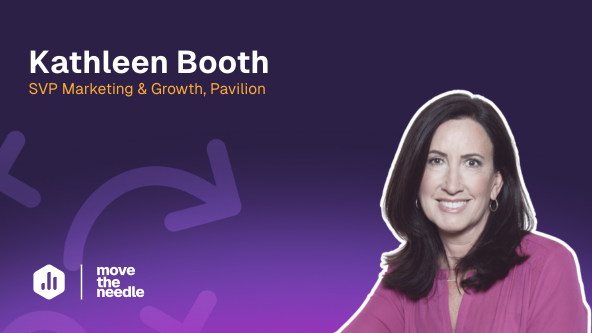Table of contents
Ever stare at your pipeline and wonder why so many deals end in “no decision”? Or struggle to understand why perfectly good prospects keep choosing to stick with their messy spreadsheets, manual processes, or outdated tools?
Then this issue is for you.
Last week on Metrics & Chill, I got to chat with Jen Allen-Knuth (aka Demand Jen) about a powerful framework that’s helping companies win more deals: Cost of Inaction (COI).
Unlike ROI which promises future gains, COI shows prospects what they’re already losing by maintaining the status quo.
Here’s why this matters:
Most companies obsess over losing deals to competitors, Jen says the real silent killer is prospects choosing to do nothing, sticking with the “status quo”. And as Jen pointed out, many “competitive” losses are actually status quo losses in disguise.
Watch the interview
Or listen to it on Spotify or Apple Podcasts.
The problem with ROI (and why COI is different)
You’ve probably been sold to many times with a focus on ROI. “Buy our product and you’ll see X% improvement!”
But there’s a fundamental flaw with this approach: ROI requires faith. It asks prospects to believe that if they change everything about how they work, they might see some future benefit.
COI flips this on its head. Instead of selling the promise of future gains, you’re highlighting current losses. As Jen put it: “ROI is a maybe. COI is a fact.” In other words, you’re already experiencing something negative in your business as a result of doing nothing. Inaction will ensure that that negative result continues.
Here’s a simple example Jen shared that illustrates the difference…
Imagine selling packable raincoats. The traditional ROI pitch focuses on features: “Our raincoat provides better coverage than umbrellas! It’s waterproof! It’s lightweight!”
But the COI approach is different. First, you identify who has the biggest problem (urban commuters in rainy cities like Chicago). Then you uncover the hidden costs of their current solution. Research shows 95% of people forget their umbrellas on rainy days. In Chicago, with 119 rainy days per year, that means regularly paying surge pricing for Uber to avoid showing up soaked to meetings. At 4-5 times per month, that’s $200 monthly in transportation costs versus a one-time $100 raincoat purchase.
We never attacked umbrellas. We simply showed how current behavior around using them is fundamentally flawed.
A 4-step framework for identifying COI
Jen shared a practical framework for uncovering your prospect’s true cost of inaction:
Step 1: Start with the organization’s goals
Don’t dive straight into departmental problems. What is the company trying to achieve at a macro level? Are they:
- Breaking into new markets?
- Implementing digital transformation?
- Launching new product lines?
- Trying to improve customer experience?
This context is crucial because sometimes the cost of inaction isn’t direct – it’s about how current problems block bigger strategic initiatives.
Step 2: Understand current alternatives
How do most companies typically solve this problem? What is the status quo they might default back to? Jen recommends looking at:
- What tools/processes they use
- Who’s involved in the current solution
- How much time it takes
- What other resources are required
- What compromises they’re making
Step 3: Understand the appeal (this is where most mess up)
Instead of attacking the current solution, ask: Why might someone rationally choose to solve the problem this way? Companies don’t make intentionally bad decisions. They make decisions based on:
- Available information at the time
- Resource constraints
- Competing priorities
- Past experiences
- Perceived risks of change
Put yourself in your prospect’s shoes, and try to understand why this seems like a logical, good solution.
Step 4: Identify the hidden costs
What do you know that they don’t? What assumptions are they making that might be flawed? Not because they’re wrong, but because:
- The environment has changed
- Their business has scaled beyond the original solution
- New options exist that weren’t available before
- The cost of the problem has grown while they weren’t looking
Where to use COI in your org
When done right, COI should influence every customer touchpoint. For example, Marketing could replace generic “RIOI calculators” with specific “COI calculators” which show prospects how much they’re losing by not taking any action to solve their problem. BDRs can use it to craft more relevant and valuable messaging or help prospects quantify their current costs in initial conversations.
And of course, it can significantly improve your sales process…
…through faster qualification and disqualification:
“The other big benefit is just disqualifying faster… by knowing upfront that the problem just wasn’t big enough to solve, I could confidently walk away from that deal. And that meant I wasn’t working these deals for like six, eight months in enterprise only to come up with nothing on the other side.”
…through making it the customer’s idea:
“Part of this is also the soft skill of making it someone else’s idea. I’m giving you the framework to calculate COI, but you’re the one that hits the enter button. And the magic in that is if someone does that versus being told it, it feels like their idea. And so they are much more likely to hang up the phone with me, walk to their boss’s office and be like, ‘look at this thing I just did!'”
… and to uncover hidden losses to “status quo”:
“If I look back at my own mistakes as a salesperson, I would just assume I was losing to these other factors that were actually just really status quo in disguise. Like ‘call me back next year,’ ‘now isn’t a good time,’ ‘let me socialize this and get back to you.'”
Common pitfalls to avoid
Creating COI narratives in a vacuum
You might be tempted to hypothesize your company’s COI, and assume it’s correct. But Jen says it’s crucial to test your message with customers. They’ll quickly tell you if you’re missing crucial elements, oversimplifying the problem, or making wrong assumptions.
Defaulting to the easy path
It’s simpler to talk about new features than dig into cost analysis. But as Jen notes, “We tend to not do what’s hard, but what’s hard works because it’s hard and nobody else does it.”
Thinking too narrow
Your COI needs to tie to real business objectives. A problem that resonates with end users might not matter to the C-suite.
Trying to force exact numbers
While quantifying costs is powerful, Jen emphasizes that not every COI needs a specific dollar amount. Sometimes the cost is missed strategic opportunities, inability to scale, or increased risk exposure. Of course, you could try to make all of these tie to an estimated dollar amount – but you don’t always need to.
Measuring success
When you implement COI effectively, you should see improvements in:
1. Pipeline metrics: reduced “no decision” losses, shorter sales cycles, higher conversion rates, and better qualification rates
2. Sales execution: more engaged discovery calls, faster disqualification of poor fits, clearer value propositions
3. Marketing performance: better-targeted leads, more compelling content performance or improved campaign conversion rates
Implementing this COI framework will help your prospects understand what maintaining the status quo is already costing them.
How to Track COI using Databox
Watch the video to learn how to track metrics like “Closed-Lost” Deals and Average Sales Cycle Length to measure the impact of COI (Cost of Inaction):












